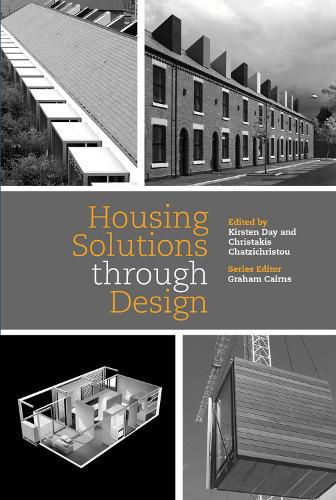Readings Newsletter
Become a Readings Member to make your shopping experience even easier.
Sign in or sign up for free!
You’re not far away from qualifying for FREE standard shipping within Australia
You’ve qualified for FREE standard shipping within Australia
The cart is loading…






This title is printed to order. This book may have been self-published. If so, we cannot guarantee the quality of the content. In the main most books will have gone through the editing process however some may not. We therefore suggest that you be aware of this before ordering this book. If in doubt check either the author or publisher’s details as we are unable to accept any returns unless they are faulty. Please contact us if you have any questions.
Housing Solutions through Design explores housing design with a special focus on affordability. It gives the perspectives of academics who research and teach on housing; professionals who design and build, and students who are learning. The book foregrounds innovative approaches of the designers of today and tomorrow.
This book is the second in the Housing the Future Series, one of the aims of which is to collate a broad sample of the work being done from a design perspective in universities across the world on the issue of affordable housing. This very ‘real’ engagement with the issues of housing affordability is a key component of this series and is why the series invites practitioners to discuss their work. In Housing Solutions through Design, those practitioners include an award-winning commercial practice from the UK, Shed KM, and two of the most important reference points in the area of housing affordability and community development internationally - the world-renowned Herman Hertzberger, from the Netherlands, and the US-based but internationally active Habitat for Humanity. The inclusion of the work of such practices is not simply important because of their undoubted international status: it is important because of the work they do and the role models they represent for a generation of architects and designers who, in the coming years, will be faced with the need - and the opportunity - to develop new approaches to housing design.
$9.00 standard shipping within Australia
FREE standard shipping within Australia for orders over $100.00
Express & International shipping calculated at checkout
This title is printed to order. This book may have been self-published. If so, we cannot guarantee the quality of the content. In the main most books will have gone through the editing process however some may not. We therefore suggest that you be aware of this before ordering this book. If in doubt check either the author or publisher’s details as we are unable to accept any returns unless they are faulty. Please contact us if you have any questions.
Housing Solutions through Design explores housing design with a special focus on affordability. It gives the perspectives of academics who research and teach on housing; professionals who design and build, and students who are learning. The book foregrounds innovative approaches of the designers of today and tomorrow.
This book is the second in the Housing the Future Series, one of the aims of which is to collate a broad sample of the work being done from a design perspective in universities across the world on the issue of affordable housing. This very ‘real’ engagement with the issues of housing affordability is a key component of this series and is why the series invites practitioners to discuss their work. In Housing Solutions through Design, those practitioners include an award-winning commercial practice from the UK, Shed KM, and two of the most important reference points in the area of housing affordability and community development internationally - the world-renowned Herman Hertzberger, from the Netherlands, and the US-based but internationally active Habitat for Humanity. The inclusion of the work of such practices is not simply important because of their undoubted international status: it is important because of the work they do and the role models they represent for a generation of architects and designers who, in the coming years, will be faced with the need - and the opportunity - to develop new approaches to housing design.